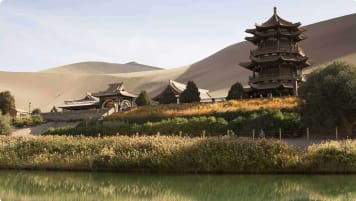Bhutan: A Hidden Kingdom. The Definitive Guide
Bhutan: a journey into the Hidden Kingdom Bhutan, a tiny and remote nation nestled within the Himalayas, has been described as a real-life Shangri-La. It is famed for its Buddhist spirituality, pristine mountain landscape, and…
21 Aug 24 · 10 mins read

Bhutan: a journey into the Hidden Kingdom
Bhutan, a tiny and remote nation nestled within the Himalayas, has been described as a real-life Shangri-La. It is famed for its Buddhist spirituality, pristine mountain landscape, and for measuring national growth in terms of happiness. Isolated from the outside world until the 1960s, Bhutan is gradually opening up – on its own terms, prioritising sustainability, well-being, and the maintenance of its traditional culture.

For more information we encourage you to read Hidden Bhutan: Entering the Kingdom of the Thunder Dragon by Martin Uitz.
Why are there no traffic lights in Thimphu?
Thimphu, the largest city in Bhutan, must be the only capital city in the world without traffic lights. When planners sought to install lights at an intersection near the city’s main square, the city’s inhabitants saw it as too modern, and demanded it be taken down. Now the intersection has a ‘human traffic light’, a policeman smartly outfitted in navy suit, military hat, and white gloves, who directs the traffic using exaggerated hand motions.

The ‘human traffic light’ is perfectly matched to the pace of Thimphu: in a city with no traffic jams, he is able to maintain absolute control. At between 100, 000 and 115, 000 people, Thimphu is one of the smallest capital cities in the world – and the third highest, at an altitude of 2, 648 m.
Yet, it is also one of the fastest growing cities in the world, perched between preserving tradition and embracing the modern world. Thimphu does not have Starbucks, McDonalds, or any of the other American chains, but the city is home to a vibrant culture of restaurants, cafes, and bars. Inhabitants chat on mobile phones, use the internet, and watch Bollywood films.
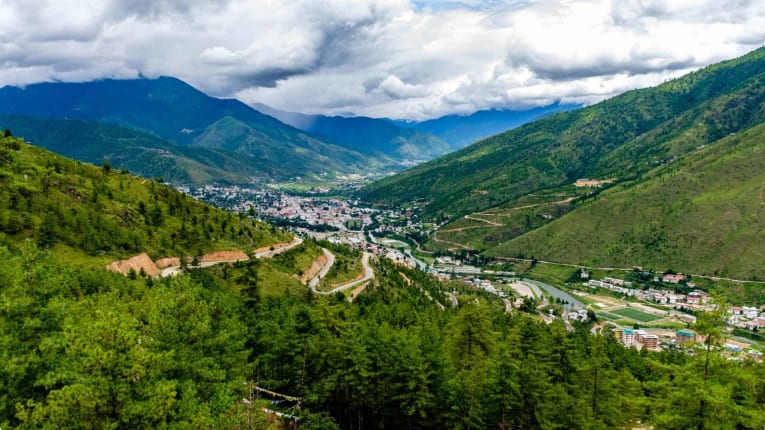
The city’s small size allows it to anticipate the challenges that other capitals in developing countries face and so address them proactively with careful planning. As a result, Thimphu has managed to avoid the development of slums, boasts an efficient sewer network and an eco-friendly sewage treatment plant established with Danish assistance, and provides reliable electricity and telephone services, cable TV, and a modest yet dependable state-run bus system. Additionally, the city has a functioning refuse collection, and its system of traffic planning makes it clear that the authorities are well-prepared for the city’s expected growth.
The city remains a bureaucratic hub, with most people who aren’t self-employed working in state administration or for one of the large, nationalised companies. However, government employees are known for taking frequent days off. In addition to the generous twenty-four national holidays, there are also religious festivals, such as the traditional Tshechu.

Plus, every Bhutanese is expected to hold religious ceremonies called pujas several times a yar. During these occasions, monks are invited to the house, for an appropriate fee, and generally spend the next three days praying for the client’s health, spiritual welfare and material prosperity. Family, friends and neighbours are typically invited to attend these rituals.
A day trip to Phajoding Monastery
If quiet Thimphu is nonetheless too busy for you, you can always make a day trip to the serenity of Phajoding, a monastery 3, 800 m above sea level, where monks spend years in isolation and meditation. The hike from Thimphu to this monastery only takes about three hours, making it a popular destination for its tranquil atmosphere, beautiful decorations and statues, and stunning views over the surrounding hills and rapidly growing metropolis beneath.
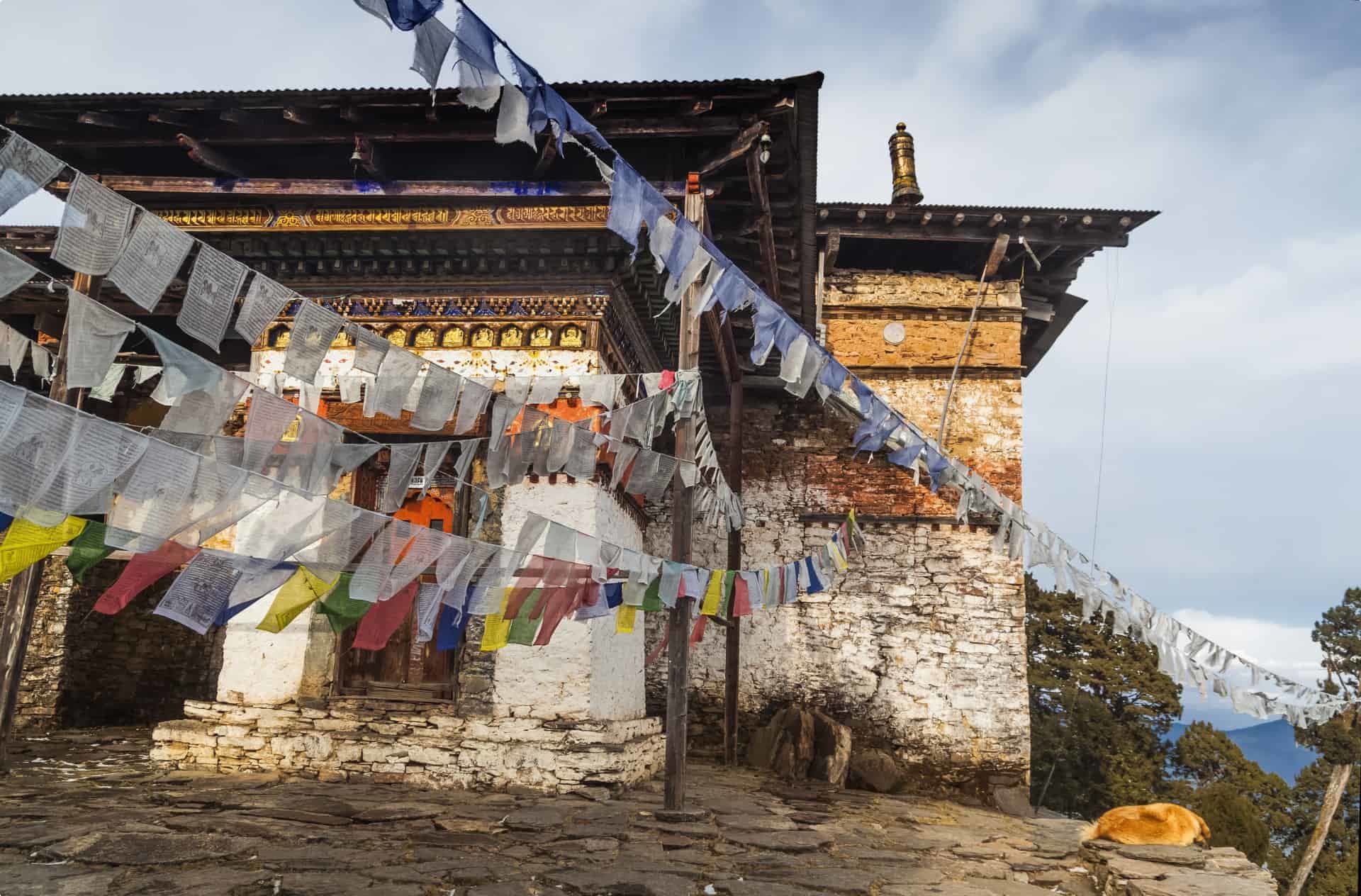
A little further up, at just over 4,000 m above sea level, lies a pretty lake. Here you can encounter yak herders with their cattle, sip soup made from fermented yak cheese, sample the local eau de vie, and relax under the midday sun on a meadow carpeted with edelweiss and gentian. Nearby, on a patch of open ground, twelve takin – Bhutan’s unique national animal – lead carefree lives, having been resettled here after the former king, guided by Buddhist principles freed them from the zoo.
Visitors on foot
Isolation is a dominant theme in the history of Bhutan. Perched among steep mountains and valleys in the Himalayas, until the 1960s, Bhutan could only be reached on foot. The country received few foreign visitors and the local culture was preserved. The first European visitors, Fathers Cacella and Cabral, Portuguese Jesuits from India, arrived in 1627, and were taken hostage by the shabdrung (a political and religious leader).
In subsequent centuries, though Bhutan was never colonised, it was forced to cede control of its foreign relations to the British, a role that was inherited by India on that country’s independence in 1947.

The last important statesman to visit Bhutan on foot was the first Indian Prime Minister, Jawaharlal Nehru, who trekked the 4500-metre-high Nathu-La in 1958. Impressed by the isolated country’s ‘spirit of peace’, he granted Bhutan full independence. With Indian-financed development plans, Bhutan built its very first roads in the 1960s. Since then, the country has slowly embraced the modern world – legalising television in 1999, and adopting a new democratic constitution in 2005.
Carbon-neutral tourism
Located amongst the soaring Himalayas, Bhutan’s landscape is one of mountain peaks, verdant valleys and crystal-clear streams, dotted with monasteries, dzongs (fortresses), and farms still tended by plough, oxen and scythe.
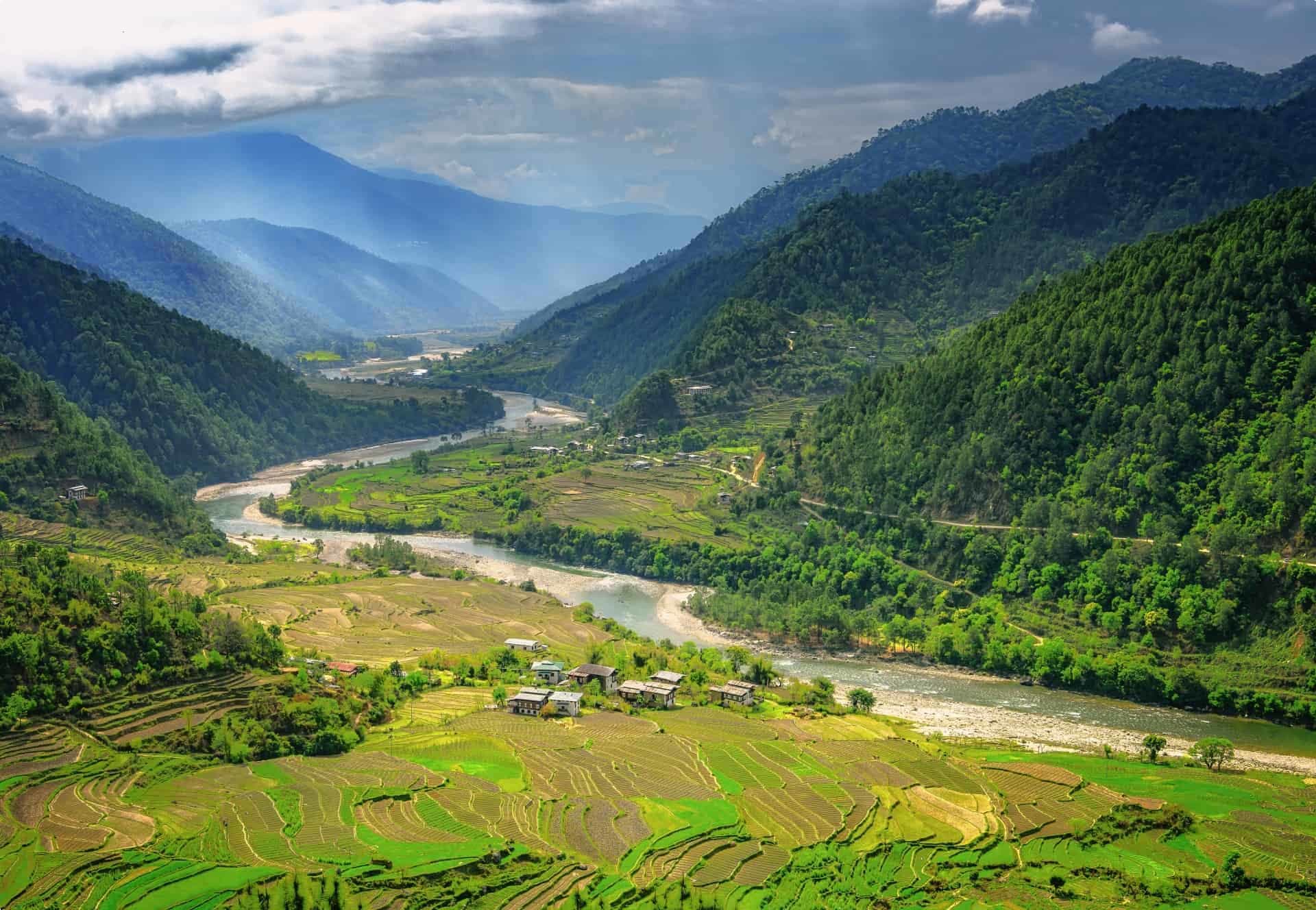
This reflects the nation’s strong belief in environmental sustainability, which is central to the Gross National Happiness program. The constitution mandates that 60 percent of the land must be forest (at the moment, the figure is 72 percent). Bhutan is the world’s only carbon-neutral nation, and, thanks to its extensive forests, consumes more carbon dioxide from the atmosphere than it emits. It has also limited its intake of tourists in order to preserve the pristine environment and cultural heritage.

The result of this for the lucky visitor is access to a virtually untouched natural landscape. See high mountain pastures of edelweiss, mountain daisies, and blue poppies. Encounter bears, blue sheep, and even the shy takin. It is believed that there are only several hundred takin left in the wild.
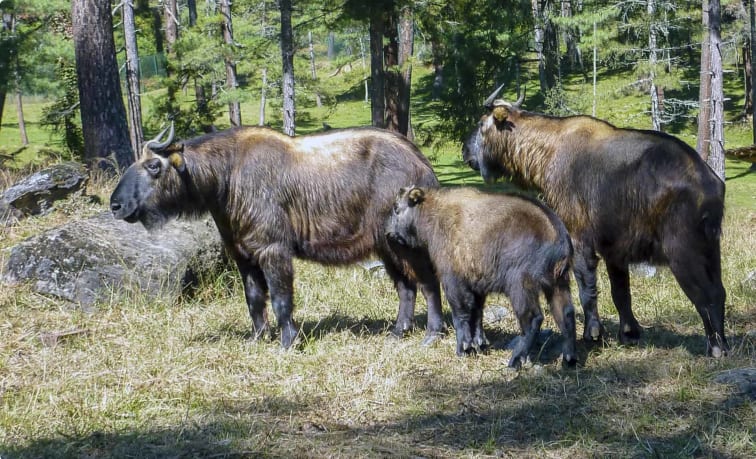
A traditional culture
Culturally, too, Bhutan remains distinct. Men and women continue to wear daily the traditional dress of gho and kira. Buddhism continues to be central to daily life.

The coming of Buddhism to Bhutan is celebrated at the annual nalakar tsechu (religious festivals), held annually at most monasteries throughout the country. The whole community comes out for these festivals, dressed in their finest clothing and jewellery, while monks perform dances in colourful masks and costumes.
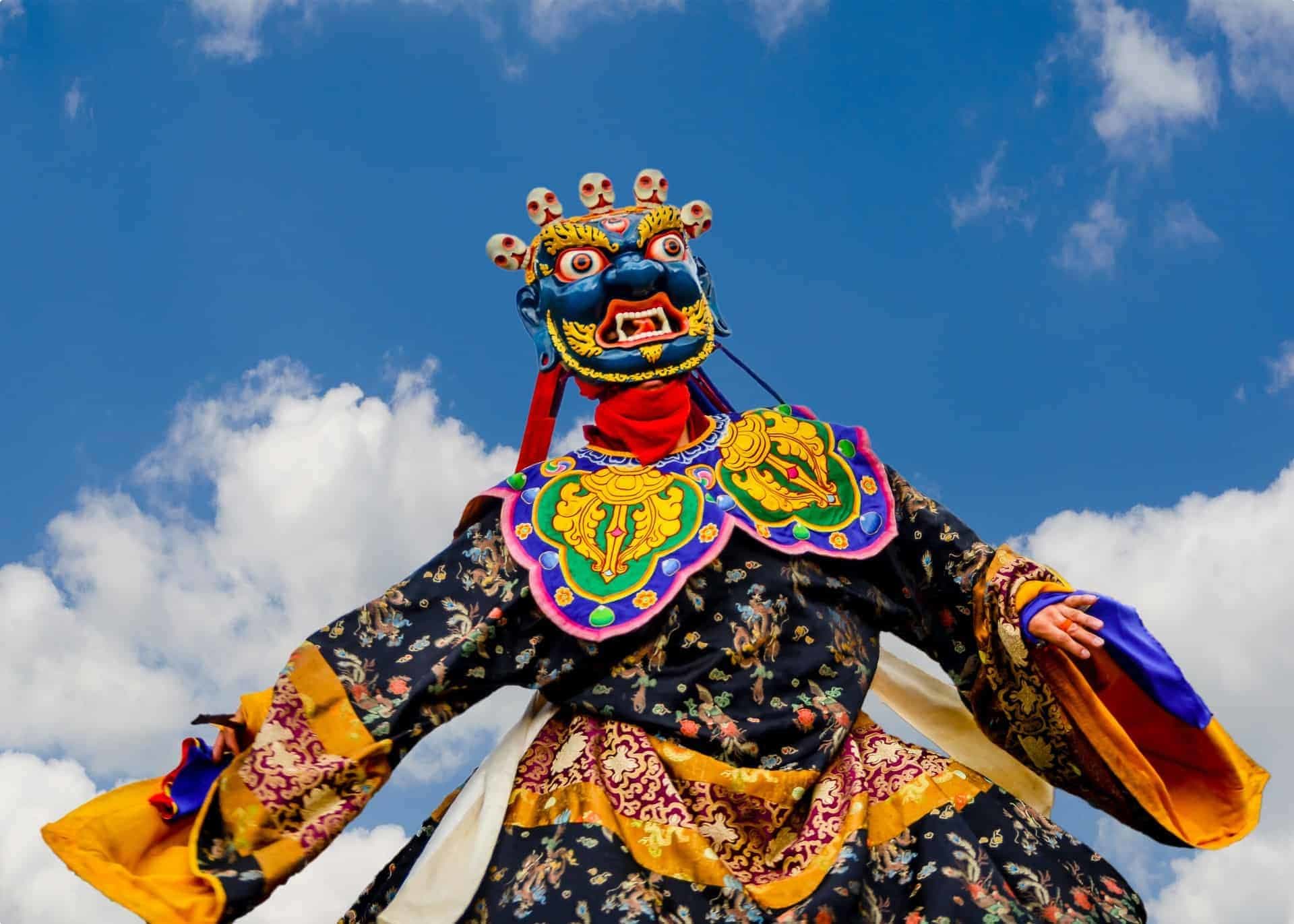
Taktsang, also known as the Tiger’s Nest, a monastery hugging a cliff face 3, 120 metres above sea level, is said to be the holiest site in Bhutan, where Guru Rinpoche materialised some 1, 300 years ago on the back of a flying tiger. Sheltering in a series of caves, he meditated for three years before converting the Bhutanese to Buddhism. The monastery was built in the 1600s to commemorate this.

Land of the medicinal herbs
For centuries Bhutan was known amongst Chinese doctors as mejong, or ‘land of the medicinal herbs’. In particular, Tibetan healers were the founders of a tradition of Bhutanese medicine, based in the use of around 350 mountain herbs and plants with healing qualities.
Most famous is cordyceps sinensis, known in the native language Dzongkha as ‘grass in summer – worm in winter’. A fungus which grows out of a caterpillar, it is believed that the substance can enable remarkable sporting achievements, cure impotence, and restore cancer patients to health. In the 1990s, the Chinese women’s track and field athletes set more than fifteen international records at international championships. Eventually, it was revealed that these amazing feats occurred because the women had been given daily doses of cordyceps for months.
For weeks each year the nation stops as inhabitants go out to gather the fungus, which can sell for as much as $3152 Australian dollars per kilo.

Today, traditional and modern medicine work harmoniously alongside one another. Patients – particularly those with chronic illness – can visit the Institute for Traditional Medicine (located in Thimphu) for free. The Institute is also open to tourists, and is a rich cultural experience and oasis of peace and calm in the middle of the city.
Gross National Happiness
Bhutan is probably most famous in the West due to the claim that the Bhutanese people are the happiest in the world. In 1971, the current King’s father, King Jigme Singye Wangchuck rejected Gross Domestic Product (GDP) as the only way to measure development. Instead, he created the idea of Gross National Happiness – which measures prosperity through the spiritual, social and environmental health of its citizens and natural environment.
Though the idea has sometimes been greeted with – perhaps understandable – skepticism, recent survey results found that 97% of the Bhutanese people described themselves as ‘happy’ or ‘very happy’. Another survey placed Bhutan as the eighth happiest country in the world.
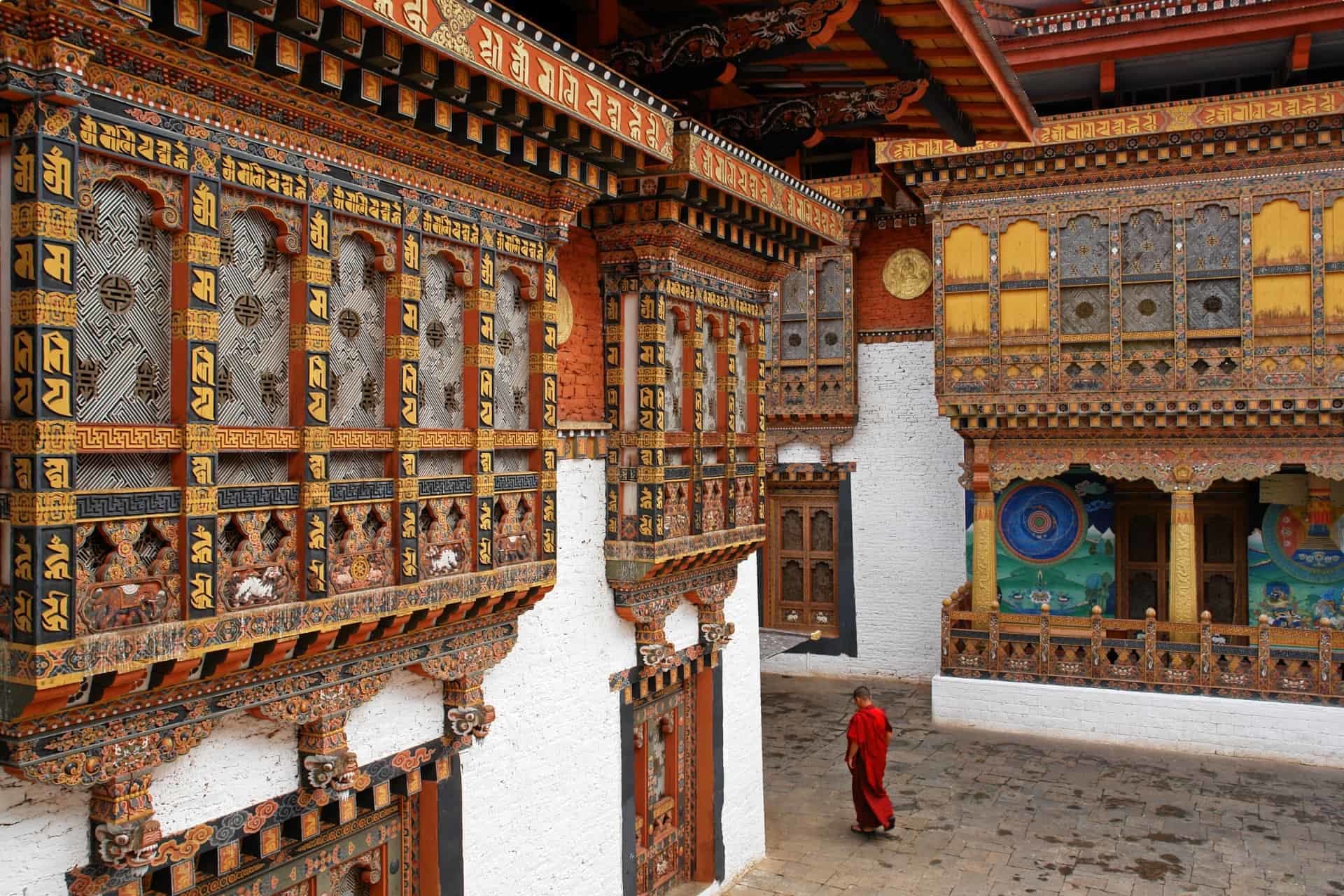
Despite relative poverty, Buddhist principles mean that the Bhutanese do not find happiness through material goods. Well-being is also enhanced by the beautiful and unspoiled mountain scenery, the strong local culture, and lack of social isolation.
The concept of Gross National Happiness has since inspired the governments of France and Britain as well as the United Nations, as a way to address current problems of climate change and global inequality.

However, precisely with the sharp economic growth in recent years, Bhutanese society has started experiencing some more unhappiness, professional jealousy, and dissatisfaction. The introduction of television in 1999, in particular, has altered people’s the way of thinking. Global issues now take centre stage in discussions, overshadowing regional and national concerns.
The new medium has arguably fuelled a growing appetite for consumer goods. As Bhutanese youth are now growing up with cable television, internet access, and multimedia, the country’s traditional pace of life is undergoing a transformation.
Nevertheless, it appears the Bhutanese people still remain happier at home than abroad. Although thousands of Bhutanese studying overseas over the last four decades, and although attending courses of further education in Europe, America, Thailand or at least India has become prerequisite to even an average career, there are very few Bhutanese emigrants in the West.
On the contrary, Bhutanese students studying abroad are known to generally suffer a great deal of homesickness, frequently have fresh chilli, red rice, and dried fish sent to them from home at considerable expense, and are eager to immediately return as soon as their courses end. It seems true happiness isn’t to be found in foreign countries; rather nearly all students with scholarships to study abroad are more than happy to return to their land of Gross National Happiness.

Outlawing Addictions
Bhutan’s philosophy of Gross National Happiness shapes many of its laws and policies, which aim to preserve cultural heritage, protect the environment, and promote the well-being of its citizens. As a result, Bhutan has enacted laws that might seem restrictive by global standards but align with its goals of maintaining tradition and ensuring social harmony.
This all started years ago with the ban on plastic. Environmental concerns prompted Thimphu city authorities to prohibit the use of plastic bags and packaging. This was followed with various restrictions on advertising content to ensure it aligns with Bhutanese culture and traditions. Any content that is seen as undermining cultural values, promoting materialism, or encouraging behaviours contrary to Bhutanese norms is forbidden.
Outdoor advertising is subject to even stricter regulations. Billboards and large-scale advertisements are either banned or severely restricted in many areas. Additionally, signs outside businesses are limited to only mentioning activities listed on the commercial licence of the enterprise in question – and they must be in simple blue, black, and white colours.

A ban on selling meat, meanwhile, is rooted in religious beliefs. As Buddhists are generally prohibited from killing any living creatures, butcher shops are viewed as fundamentally objectionable. Many Bhutanese still enjoy eating yak meat, pork, and chopped chicken though. So, the profession of butcher is often carried out by Hindu migrants or by certain families in the villages who have taken on this role. Nevertheless, the butchers’ shops and stalls selling meat are shut on Sundays and religious holidays.

Perhaps Bhutan’s most internationally publicized ban though is that on tobacco. While smoking itself is not forbidden, the trade in tobacco is, with its cultivation, harvesting, production, and sale all outlawed. All smoking products must be imported, but only for personal use, in limited quantities, and with high import duties and taxes.
Smoking in public buildings, offices, restaurants and bars is also forbidden. However, there are challenges with enforcement, with a booming black market. Regular smokers also often know the exact bars and pubs which at least have a back room where smoking is tolerated. Still, despite these enforcement issues, tobacco use in Bhutan remains significantly lower than the global average.
There is no ban on the popular narcotic doma, however. Chewing areca nut, coated with a layer of dried chalk and wrapped in betel tree leaves, is a significant part of Bhutanese social and cultural life. The effect is of a mild stimulant, similar to caffeine, due to the presence of arecoline, an alkaloid in the areca nut. Hundreds of thousands of Bhutanese are addicted to it, chewing doma anything between five to fifty times a day.
The drug observes no social barriers, and is incredibly affordable, costing only a few cents. It is customary for people to offer doma to each other during meetings, and it even plays a role in religious ceremonies, where betel leaves and areca nut are distributed as part of the ritual. Given its cultural significance, attempting to ban doma would be political suicide.

Tour of Bhutan
If this article has interested you in visiting Bhutan, Odyssey Traveller runs a small group tour of Bhutan. Odyssey’s tour, designed for the active senior traveller, crosses Bhutan in a comfortable modern coach. You will visit Thimphu and the Institute of Traditional Medicine, scale the Takstang monastery, see mountains and pastures, and maybe even encounter a takin in the wild. The tour is lead by an experienced tour leader, along with knowledgeable local guides, in order to ensure an authentic experience of one of the world’s most unique countries.
Articles about Bhutan published by Odyssey Traveller:
- Bhutan: A journey into the Hidden Kingdom.
- Festivals of Bhutan.
- Bhutan’s Nalakhar Tschechu Festival
- Temples of Bhutan
- The National Textile Museum of Bhutan
- Highlights of Bhutan: Tiger’s Nest Monastery
External articles to assist you on your visit to Bhutan:
- Buddhism in Bhutan
- Interview: Why I swapped investment banking for Buddhism in Bhutan
- What It’s Like To Visit Taktsang Monastery (Tiger’s Nest) In Bhutan
- How to Visit the Tiger’s Monastery in Bhutan
- Visit the world’s only carbon-neutral country.
- Traveling in Bhutan: What you need to know before you go.
- 23 facts about Asia’s most mysterious country.
Related Tours
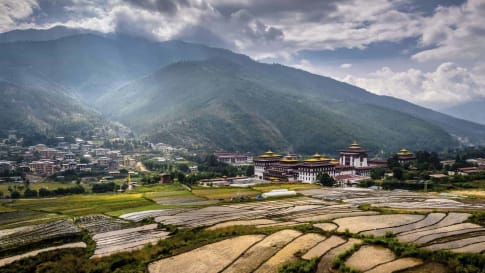
17 days
Sep, AprBhutan | Small Group Cultural Tour
Visiting Bhutan
An unhurried ocean of calm in a crowded continent, Bhutan is scenically magnificent. Join our small group escorted tour and walk up the mountain to the famous Tiger's Nest monastery. The Bhutanese will welcome you to share their distinctive culture, unpolluted environment, and colourful festivals.We explore centuries of Buddhist tradition inherited from Tibet that have shaped this land with art, dance, music, and even medicine shaped by religion.
From A$13,695 AUD
View Tour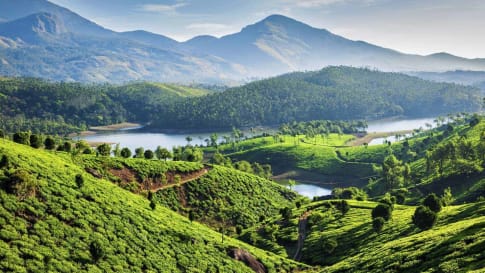
22 days
Nov, MarCultural and History Tour of India | Small Group Tour
Visiting India
Small group tour for mature and senior couples and solo travellers to India. Visiting Delhi and the red fort, Jaipur, Agra and so much more over 22 days explore the world of the Mughal.
From A$12,300 AUD
View Tour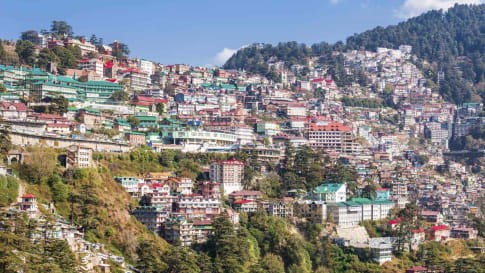
days
OctNorth East India Explorer
Visiting India
An out-of-this-world trip to the Indian countryside.
